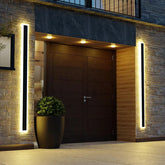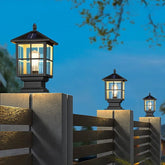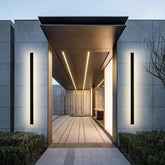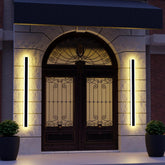Floor Lamp Designs to Elevate Your Living Space
Why a Floor Lamp Matters in Interior Design
Among the most versatile and stylish lighting options, the floor lamp stands as both a functional source of light and a decorative statement piece. Unlike ceiling lights, which are fixed and often serve as the room’s general illumination, floor lamps can be moved, repositioned, and adjusted to suit different needs. They add height, depth, and character, transforming interiors with minimal effort.
A floor lamp is not just about lighting—it contributes to atmosphere, mood, and style. Whether creating a cozy reading nook, brightening a dark corner, or making a bold design statement, the right floor lamp elevates an entire room.

The Evolution of Floor Lamps
Floor lamps first appeared in the late 19th and early 20th centuries, coinciding with the widespread use of electricity in homes. Initially simple in design, they often featured fabric shades and wooden bases. Over the decades, floor lamps evolved alongside design movements—from the ornate lamps of the Victorian era to the sleek, modernist styles of the mid-20th century.
Today, floor lamps are available in countless forms, from classic arc lamps to ultra-modern sculptural designs. This evolution has allowed them to remain relevant, adapting to changing tastes while continuing to serve as essential elements of home lighting.
Key Benefits of Using a Floor Lamp
Flexibility and Mobility
Unlike ceiling or wall fixtures, a floor lamp can be easily moved. Whether shifting it beside a sofa, relocating it to a bedroom, or repositioning it for task lighting, its portability ensures maximum flexibility.
Layered Lighting
Interior designers emphasize the importance of layered lighting—combining ambient, task, and accent lighting for balance. Floor lamps often act as a bridge between ceiling lights and table lamps, adding both function and atmosphere.
Aesthetic Impact
A well-chosen floor lamp can double as a piece of art. From minimalist standing lamps to bold sculptural designs, they contribute significantly to interior aesthetics.
Space Enhancement
By adding verticality, floor lamps draw the eye upward, making ceilings feel taller and rooms more spacious. They also help define zones within open-plan layouts.
Popular Styles of Floor Lamps
Arc Floor Lamps
Arc lamps feature curved arms that extend light over seating areas or tables. They are ideal for living rooms where overhead lighting may be lacking.
Tripod Floor Lamps
With three-legged bases, tripod lamps provide stability and style. These designs often incorporate fabric or drum shades, blending function with visual interest.
Torchiere Floor Lamps
Torchiere designs direct light upward, reflecting it off ceilings for soft, diffused illumination. They are perfect for creating ambient light in large spaces.
Reading and Task Floor Lamps
These floor lamps feature adjustable arms or heads that direct light onto specific areas, making them ideal for reading corners, workspaces, or hobby areas.
Decorative and Statement Lamps
Some floor lamps are designed less for function and more for artistic value. Sculptural shapes, bold finishes, and creative designs turn them into conversation pieces.
Where to Use Floor Lamps
Living Rooms
In living rooms, a floor lamp can highlight a seating area, create cozy reading nooks, or balance lighting when paired with ceiling fixtures. Arc and tripod lamps are particularly popular in this setting.
Bedrooms
Floor lamps in bedrooms provide soft ambient lighting or targeted reading light. Slim designs fit easily into corners, maximizing space in compact rooms.
Offices and Studios
In home offices or studios, task-oriented floor lamps improve focus and reduce eye strain. Adjustable lamps with directional heads are particularly useful.
Hallways and Entryways
A decorative floor lamp in a hallway or entryway creates a warm, welcoming atmosphere. It also adds character without requiring wall or ceiling installation.
Dining Areas
Though less conventional, placing a floor lamp in dining areas can create intimate atmospheres, particularly when overhead lighting is too harsh.
Choosing the Right Floor Lamp
Consider Room Size and Layout
A large arc floor lamp suits spacious living rooms, while compact tripod lamps are ideal for smaller bedrooms. The lamp’s scale should complement the size of the room and furniture.
Match Style with Décor
The design of a floor lamp should align with the room’s aesthetic. Modern spaces benefit from minimalist metal lamps, while rustic interiors pair well with wooden or fabric-shaded designs.
Light Output and Function
Determine whether the lamp is primarily for ambience, reading, or decoration. A torchiere lamp offers soft ambience, while a task floor lamp provides direct illumination.
Bulb and Energy Efficiency
LED bulbs are the best choice for floor lamps. They are long-lasting, energy-efficient, and available in various color temperatures to suit different moods.
The Role of Floor Lamps in Layered Lighting
Lighting design works best when layered. A floor lamp bridges gaps in illumination, providing both task and accent lighting. For example, a living room may have ceiling spotlights for general brightness, but a floor lamp beside the sofa adds intimacy and warmth.
By layering different light sources, rooms feel more dynamic, comfortable, and adaptable to different activities.
Advantages of Floor Lamps Over Other Fixtures
Unlike ceiling or wall-mounted lights, floor lamps do not require drilling or wiring. They are portable, flexible, and easy to replace. Their decorative designs also allow them to serve as furniture-like pieces, making them multifunctional.
Modern Innovations in Floor Lamp Design
Smart Floor Lamps
Some modern floor lamps include smart technology, allowing users to control brightness and color temperature via apps or voice assistants.
Dimmable and Color-Adjustable Lamps
Adjustable brightness ensures flexibility, allowing one lamp to serve multiple purposes—from bright task lighting to soft evening ambience.
Multifunctional Designs
Some floor lamps now integrate additional features such as shelves, charging ports, or side tables, combining lighting with practical furniture.
How Floor Lamps Transform Ambience
A floor lamp is not just about brightness; it is about mood. Soft warm light creates a cozy environment for relaxation, while bright neutral light enhances productivity. By carefully choosing the style and placement of a floor lamp, homeowners can dramatically change the feel of a space without major renovations.
Care and Maintenance of Floor Lamps
Most floor lamps require minimal maintenance—dusting shades, checking bulbs, and occasionally tightening screws. LED bulbs reduce replacement frequency, while durable materials like metal and treated wood extend the lifespan of the fixture.
Why Every Home Needs a Floor Lamp
Every home, regardless of size or style, benefits from a floor lamp. It provides balance in lighting design, enhances décor, and offers flexibility unmatched by other fixtures. A floor lamp is more than a source of illumination—it is a statement of style and a tool of comfort.
Whether modern, rustic, or decorative, floor lamps enrich interiors by combining function, ambience, and design. Their adaptability ensures they remain essential elements of lighting in contemporary homes.
FAQs
What is the best type of floor lamp for a living room?
Arc and tripod floor lamps are popular for living rooms, offering both ambient lighting and stylish design.
Can floor lamps replace ceiling lights?
In smaller spaces, a bright floor lamp can substitute for ceiling lighting. However, most homes benefit from using them together for layered illumination.
Are floor lamps energy efficient?
Yes. When fitted with LED bulbs, floor lamps provide long-lasting, energy-efficient lighting that reduces electricity costs.
Do floor lamps work in small rooms?
Absolutely. Slim or minimalist floor lamps are perfect for small spaces, adding light without crowding the room.
How tall should a floor lamp be?
Most floor lamps range from 5 to 7 feet in height. The ideal size depends on ceiling height and placement relative to furniture.










